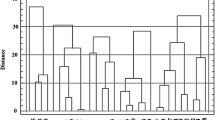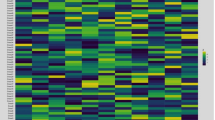Abstract
Tomato (Solanum lycopersicum L.) is the second most important vegetable crop after potatoes, and global demands have been steadily increasing in recent years. Conventional and modern breeding techniques have been applied to breed and domesticate tomato varieties to meet the need for higher yield or superior agronomical traits that allow them to sustain under different climatic conditions. In the current study, we applied bulk population breeding by crossing eight tomato accessions procured from the Asian Vegetable Research and Development Center with three heat-resistant tomato inbred lines from Vietnam and generated ten elite tomato (ET) lines in the F8 generation. The individual F8 lines exhibited robust vigor and adaptability to climatic conditions of North Vietnam. Among the ten lines, ET1 and ET3 displayed indeterminate growth. ET2 showed semi-determinate, while all the other lines had determinate growth. The different ET lines showed distinctive superior agronomical traits, including early maturing (ET4, ET7, and ET10), highly efficient fruit set (ET1), higher yield (ET1, ET8, ET10), jointless pedicels (ET2), and partial parthenocarpy (ET9). Molecular analysis revealed that the ET3 line consisted of Ty-1 and Ty-3 loci that positively contribute to Tomato yellow leaf curl virus resistance in tomato plants. The elite tomato lines developed in this study would contribute significantly to the Vietnamese and Asian gene pool for improved tomato production and would be a valuable resource for various breeding goals.




Similar content being viewed by others
Data availability
All data generated or analyzed during this study are included in this published article. Additional data will be provided upon request.
References
Acquaah G (2012) Principles of plant genetics and breeding, 2nd edn. Wiley-Blackwell, New York. https://doi.org/10.1002/9781118313718
Acquaah G (2016) Conventional plant breeding principles and techniques. Advances in plant breeding strategies: breeding, biotechnology and molecular tools, vol 1. Springer, New York, pp 115–158. https://doi.org/10.1007/978-3-319-22521-0_5
AVRDC (2023) World Vegetable Center. 2023. Annual Report 2022. World Vegetable Center, Shanhua, Taiwan. Publication 23–1085. 80:18
Bai Y, Lindhout P (2007) Domestication and breeding of tomatoes: What have we gained and what can we gain in the future? Ann Bot 100:1085–1094. https://doi.org/10.1093/aob/mcm150
Barbieri M, Acciarri N, Sabatini E, Sardo L, Accotto GP, Pecchioni N (2010) Introgression of resistance to two Mediterranean virus species causing tomato yellow leaf curl into a valuable traditional tomato variety. Plant Pathol J 92:485–493
Barrett DM, Weakley C, Diaz JV, Watnik M (2007) Qualitative and nutritional differences in processing tomatoes grown under commercial organic and conventional production systems. J Food Sci 72:C441–C451. https://doi.org/10.1111/j.1750-3841.2007.00500.x
Cappetta E, Andolfo G, Di Matteo A, Barone A, Frusciante L, Ercolano MR (2020) Accelerating tomato breeding by exploiting genomic selection approaches. Plants 9:1236. https://doi.org/10.3390/plants9091236
Chen SX, Du JN, Hao LN, Wang CY, Chen Q, Chang YX (2012) Identification of markers tightly linked to tomato yellow leaf curl disease and root-knot nematode resistance by multiplex PCR. Genet Mol Res 11:2917–2928. https://doi.org/10.4238/2012.July.10.4
de Souza LM, Melo PCT, Luders RR, Melo AMT (2012) Correlations between yield and fruit quality characteristics of fresh market tomatoes. Hortic Bras 30:627–631. https://doi.org/10.1590/S0102-05362012000400011
Doan XC, Nguyen DT, Doan TTT, Nguyen TTH (2021) The result of breeding and testing VT15 hybrids tomato. Vietnam J Agric Rural Dev 9:34–41
FAO (2020) FAOSTAT, Food and Agriculture Organization of the United Nations. https://www.fao.org/faostat/en/#home. Accessed 25 Nov 2022
Gorguet B, Eggink PM, Ocaña J, Tiwari A, Schipper D, Finkers R, Visser RGF, van Heusden AW (2008) Mapping and characterization of novel parthenocarpy QTLs in tomato. Theor Appl Genet 116:755–767. https://doi.org/10.1007/s00122-007-0708-9
He M, Song S, Zhu X, Lin Y, Pan Z, Chen L, Chen D, Hu G, Huang B, Chen M, Wu C, Chen R, Bouzayen M, Zouine M, Hao Y (2021) SlTPL1 Silencing induces facultative parthenocarpy in tomato. Front Plant Sci 12:672232. https://doi.org/10.3389/fpls.2021.672232
Ji Y, Scott JW (2005) Identification of RAPD markers linked to Lycopersicon chilense derived begomovirus resistant genes on chromosome 6 of tomato. Acta Hortic 695:407–416. https://doi.org/10.17660/ActaHortic.2005.695.50
Ji Y, Salus MS, van Betteray B, Smeets J, Jensen KS, Martin CT, Mejia L, Scott JW, Havey MJ, Maxwell DP (2007a) Co-dominant SCAR markers for detection of the Ty-3 and Ty-3a loci from Solanum chilense at 25 cM of chromosome 6 of tomato. Tomato Genet Cooper 57:25–29
Ji Y, Schuster DJ, Scott JW (2007b) Ty-3, a begomovirus resistance locus near the tomato yellow leaf curl virus resistance locus Ty-1 on chromosome 6 of tomato. Mol Breed 20:271–284. https://doi.org/10.1007/s11032-007-9089-7
Jo WJ, Shin JH (2020) Effect of leaf-area management on tomato plant growth in greenhouses. Hortic Environ Biotechnol 61:981–988. https://doi.org/10.1007/s13580-020-00283-1
Justin JR, Fehr WR (1988) Principles of cultivar development: theory and technique. Soil Sci 145:390
Kleinhenz MD, Bumgarner NR (2012) Using Brix as an indicator of vegetable quality. Linking measured values to crop management. Fact Sheet Agric Nat Res 2:1650
Kramer CY (1956) Extension of multiple range tests to group means with unequal numbers of replications. Biometrics 12:307–310. https://doi.org/10.2307/3001469
Laverty W, Kelly I (2019) Using excel to explore the effects of assumption violations on one-way analysis of variance (ANOVA) statistical procedures. Open J Stat 9:458–469. https://doi.org/10.4236/ojs.2019.94031
Levy D, Lapidot M (2008) Effect of plant age at inoculation on expression of genetic resistance to tomato yellow leaf curl virus. Arch Virol 153(1):171–179. https://doi.org/10.1007/s00705-007-1086-y
Li Z, Xu Y (2022) Bulk segregation analysis in the NGS era: a review of its teenage years. Plant J 109:1355–1374. https://doi.org/10.1111/tpj.15646
Maboko M, Du Plooy C, Chiloane S (2017) Yield of determinate tomato cultivars grown in a closed hydroponic system as affected by plant spacing. Hortic Bras 35:258–264. https://doi.org/10.1590/s0102-053620170217
Markova DN, Petersen JJ, Qin X, Short DR, Valle MJ, Tovar-Méndez A, McClure BA, Chetelat RT (2016) Mutations in two pollen self-incompatibility factors in geographically marginal populations of Solanum habrochaites impact mating system transitions and reproductive isolation. Am J Bot 103:1847–1861. https://doi.org/10.3732/ajb.1600208
Mazzucato A, Cellini F, Bouzayen M, Zouine M, Mila I, Minoia S, Petrozza A, Picarella ME, Ruiu F, Carriero F (2015) A TILLING allele of the tomato Aux/IAA9 gene offers new insights into fruit set mechanisms and perspectives for breeding seedless tomatoes. Mol Breed 35:1–15. https://doi.org/10.1007/s11032-015-0222-8
McGarry RC, Ayre BG (2012) Manipulating plant architecture with members of the CETS gene family. Plant Sci 188–189:78–81. https://doi.org/10.1016/j.plantsci.2012.03.002
Michelson I, Zamir D, Czosnek H (1994) Accumulation and translocation of tomato yellow leaf curl virus (TYLCV) in a Lycopersicon esculentum breeding line containing the L. chilense TYLCV tolerance gene Ty-1. Phytopathol 84:928–933. https://doi.org/10.1094/Phyto-84-928
Nguyen TM, Tran KT, Duong TN (2007) The results of the experiments on tomato collection at Thai Nguyen province. Vietnam J Agric Rural Dev 17:21–26
Pisello L, Forte C, D’Avino N, Pisano R, Hyatt DR, Rueca F, Passamonti F (2021) Evaluation of Brix refractometer as an on-farm tool for colostrum IgG evaluation in Italian beef and dairy cattle. J Dairy Sci 88:189–193. https://doi.org/10.1017/S0022029921000315
Prasad A, Sharma N, Hari-Gowthem G, Muthamilarasan M, Prasad M (2020) Tomato yellow leaf curl virus: impact, challenges, and management. Trends Plant Sci 25:897–911. https://doi.org/10.1016/j.tplants.2020.03.015
Quirk TJ (2012) One-way analysis of variance (ANOVA). Excel 2007 for educational and psychological statistics. Springer, New York. https://doi.org/10.1007/978-1-4614-3725-3_8
Research and Markets (2022) Tomato seeds global market report 2022. Report Linker. https://www.globenewswire.com/news-release/2022/06/15/2463206/0/en/Tomato-Seeds-Global-Market-Report-2022.html. Assessed 22 Feb 2023
Robertson LD, Labate JA (2006) Genetic resources of tomato (Lycopersicon esculentum mill.) and wild relatives. Genetic improvement of solanaceous crops, volume 2: tomato. CRC Press, Taylor & Francis Group, London, pp 25–75. https://doi.org/10.1201/b10744-3
Takisawa R, Maruyama T, Nakazaki T, Kataoka K, Saito H, Koeda S, Nunome T, Fukuoka H, Kitajima A (2017) Parthenocarpy in the tomato (Solanum lycopersicum L.) cultivar ‘MPK-1’ is controlled by a novel parthenocarpic gene. Hortic J 86:487–492. https://doi.org/10.2503/hortj.OKD-042
Tester M, Langridge P (2010) Breeding technologies to increase crop production in a changing world. Science 327:818–822. https://doi.org/10.1126/science.1183700
Tukey JW (1949) Comparing individual means in the analysis of variance. Biometrics 5:99–114
Verlaan MG, Hutton SF, Ibrahem RM, Kormelink R, Visser RGF, Scott JW, Edwards JD, Bai Y (2013) The tomato yellow leaf curl virus resistance genes Ty-1 and Ty-3 are allelic and code for DFDGD-class RNA-dependent RNA polymerases. PLoS Genet 9:e1003399. https://doi.org/10.1371/journal.pgen.1003399
Vicente MH, Zsögön A, de Sá AF, Ribeiro RV, Peres LE (2015) Semi-determinate growth habit adjusts the vegetative-to-reproductive balance and increases productivity and water-use efficiency in tomato (Solanum lycopersicum). J Plant Physiol 177:11–19. https://doi.org/10.1016/j.jplph.2015.01.003
Wang H, Schauer N, Usadel B, Frasse P, Zouine M, Hernould M, Latché A, Pech JC, Fernie AR, Bouzayena M (2009) Regulatory features underlying pollination-dependent and-independent tomato fruit set revealed by transcript and primary metabolite profiling. Plant Cell 21:1428–1452. https://doi.org/10.1105/tpc.108.060830
Yan Z, Pérez-de-Castro A, Díez MJ, Hutton SF, Visser RGF, Wolters AMA, Bai Y, Li J (2018) Resistance to tomato yellow leaf curl virus in tomato germplasm. Front Plant Sci 9:1198. https://doi.org/10.3389/fpls.2018.01198
Zamir D, Ekstein-Michelson I, Zakay Y, Navot N, Zeidan M, Sarfatti M, Eshed Y, Harel E, Pleban T, Van-Oss H, Kedar N, Rabinowitch HD, Czosnek H (1994) Mapping and introgression of a tomato yellow leaf curl virus tolerance gene, TY-1. Theor Appl Genet 88:141–146. https://doi.org/10.1007/BF00225889
Zhang Y, Guo W, Yuan Z, Song Z, Wang Z, Gao J, Fu W, Zhang G (2023) Chromosome-level genome assembly and annotation of the prickly nightshade Solanum rostratum Dunal. Sci Data 10:341
Acknowledgements
This work was supported by the Key Research Funding Program of Vietnam National University of Agriculture (T2018-12-06 TĐ), National Research Foundation of Korea (2019H1D3A1A01102938, 2022R1A2C3010331, 2020R1A6A1A03044344, 2021R1A5A8029490), and the Program for New Plant Breeding Techniques (NBT, PJ01686702), Rural Development Administration (RDA), Korea.
Funding
The authors have not disclosed any funding.
Author information
Authors and Affiliations
Contributions
CCN and J-YK conceived the idea and designed the experiments. CCN designed experiments, performed experiments, analyzed data, and wrote the manuscript; CCN, TVV, HVT, NTN, XCN, V-A-KD, and HTN performed the experiments; RMS contributed to the interpretation and draft of the output; RMS, TVV, W-YK and J-YK revised the manuscript. All authors read and approved the final manuscript.
Corresponding authors
Ethics declarations
Conflict of interest
The authors declare that they have no conflicts of interest.
Additional information
Publisher's Note
Springer Nature remains neutral with regard to jurisdictional claims in published maps and institutional affiliations.
Supplementary Information
Below is the link to the electronic supplementary material.
Rights and permissions
Springer Nature or its licensor (e.g. a society or other partner) holds exclusive rights to this article under a publishing agreement with the author(s) or other rightsholder(s); author self-archiving of the accepted manuscript version of this article is solely governed by the terms of such publishing agreement and applicable law.
About this article
Cite this article
Nguyen, C.C., Shelake, R.M., Vu, T.V. et al. Characterization of yield and fruit quality parameters of Vietnamese elite tomato lines generated through phenotypic selection and conventional breeding methods. Euphytica 220, 18 (2024). https://doi.org/10.1007/s10681-023-03273-3
Received:
Accepted:
Published:
DOI: https://doi.org/10.1007/s10681-023-03273-3




